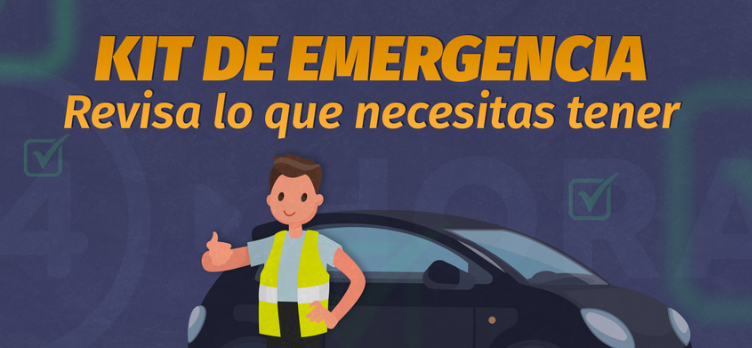Ready and loaded suitcases, children with seat belts and entertainment prepared for several hours, cookies for the road, full pond, precise pressure in the tires.
Is there something missing to start the trip? Well, do not forget to have the complete and revised safety kit, since in the event of an emergency it could be the difference between solving the problem of having a day of discomfort or even disaster on the road.
The National Safety Commission (Conaset) proposes in its document “Book of the new driver” in its version for motorists that always before traveling the visibility in the front windshields, the rear window and the side windows is checked, that the mirrors are checked have good visibility and that the doors are closed.
Also, they call to check that they have all the emergency devices, which we detail below.
What your car should have
Extinguisher
Remember that the extinguisher must have a load, not be expired, and be located in a place that allows it to be used promptly and safely if needed.
Spare wheel
The wheel must be in good condition and be complete (rim and tire). This, except in special cases of the regulation.
Also, the necessary elements must be brought for their replacement (“cat” and cross wrench).
Reflective triangles
It is recommended to have two equilateral reflective triangles in your vehicle. These should be red and visible both at night and during the day. Also, they must be made of firm materials that will not be damaged in the event of an accident.
Reflective triangles must maintain stability and, if used, be placed one in front and one behind the vehicle.
The vest must be made of yellow fluorescent material and have bands of retroreflective material 50 mm wide.
It should always be in a place accessible to the interior of the vehicle so that the driver can get out of the car with the garment on if needed.
First aid kit
Although the kit is not compulsory for private vehicles (it is for cargo, collective transportation, and school transport), it is an extremely useful element.
It is recommended that the kit bring physiological serum, pain relievers, alcohol, adhesive cloth, sterile gauze, procedure gloves, tweezers, thermometer, cotton, and bandages.
